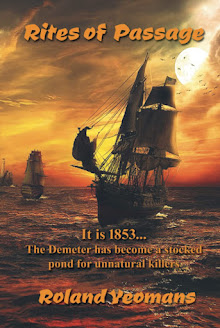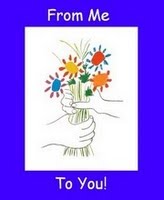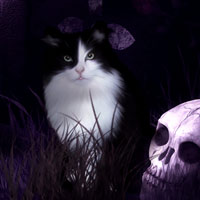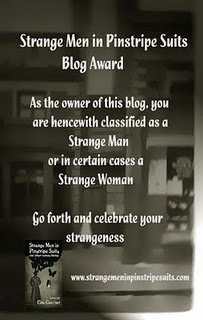 In a new book, “Bloody Murder: The Homicide Tradition in Children’s
Literature,”
In a new book, “Bloody Murder: The Homicide Tradition in Children’s
Literature,” Michelle Ann Abate reveals that violence has always played a central role in children’s books—
from actual fairy tales up to high school reading lists today.
In short, it’s not just adults, with their true crime books and endless reruns of “Law & Order,” who are hooked on homicide.
As Abate writes, “the American obsession with murder also permeates its literature for children.”
Grimm’s Fairy Tales, which contain far more violence and depravity than Disney viewers might imagine.
There’s also J. M. Barrie’s “Peter Pan,” where Captain Hook plots the death of Peter (and Tinker Bell mulls the murder of Wendy).
Tom Sawyer watches a man drive “the knife to the hilt” in another man’s chest, “flooding him with his blood.”

And entire massively popular series, including Goosebumps and Fear Street, revolve in large part around murders.
Indeed, some library catalogs now use “Murder—Juvenile fiction” as a subject heading.
Nathan Bransford had an excellent article,
VIOLENCE IN AMERICAN CULTURE:http://blog.nathanbransford.com/2012/07/violence-in-american-culture.html
As Nathan says, there is a lot of violence in today's YA.
When the Queen in “Alice in Wonderland” screams “Off with her head!” it’s not just a punch line, but an allusion to the real-life queen’s ability to execute her subjects for any one of 200-plus crimes.
The long history of kids’ books addressing our potential for violence can also add perspective to the handwringing over “The Hunger Games.” In fact, the literature children read has changed far less than we think. Their parents—well, does 50 SHADES sound familiar?

Look at the cover of THE LEGEND OF VICTOR STANDISH:http://www.amazon.com/THE-LEGEND-VICTOR-STANDISH-ebook/dp/B005NCUTAG/ref=pd_sim_kstore_29
The Victorian ghoul, Alice Wentworth, is clutching her gypsy love, Victor Standish, with sharp teeth bared.
Their world is dark. Their enemies foul and supernatural. Their love a beacon in the shadows. Their laughter their shield against despair.
Perhaps we do our teens no favor if we paint the world in false gilding of Pollyannish cliches. Perhaps we do them good if we show them
struggling teens combating the darkness with the light of sacrificial love and laughter thrown in the teeth of the wolves on the streets.
Closing our eyes does not make the evils disappear. Showing heroes who refuse to give in to the darkness and insist on finding laughter in their pain may be the best thing we can do.
What do you think?
Adults are fascinated by violence and murder—How did he do it? Why did he do it? What’s his punishment? It’s human nature. And children, after all, are human beings.
Edgar Rice Burroughs’s “Tarzan of the Apes,” which was first released as a magazine serial in 1912, is a great example.
There is a tidal wave of killings—people killing people, people killing animals, animals killing people. All of them are truly gruesome and gory.
The same thing’s true of “Alice in Wonderland” and many other classics, books that would never be challenged today.
These examples are all conveniently forgotten when there’s a public outcry about a particular book like "The Hunger Games" for being so graphic and so violent.
It’s almost a kind of literary amnesia.
Has the rise of senseless murders in classrooms, bombings at the Boston Marathon, and the shooting just last week across the headlines
made the public take a second look at what their children are reading?
What do you think?


























































































































































































A provocative question, Roland.
ReplyDeleteMurder and violence have long been subject matter for entertainment. It's not the presence of violence but the casualness with which it's dealt that has changed—video games and film & TV being the most graphic examples.
When I write about murder—which I do often—I try to make it brief and stark. I want readers to understand the reality, the loss, the devastation. Writing about murder isn't the problem, it's how we treat it that is at issue. As a society we are beginning to regard wholesale murder casually. We are becoming inured to the violence. And no, I don't think anyone is looking out for the children.
http://vrbarkowski.wordpress.com/
VR:
ReplyDeleteAn insightful reply as always. Why, of course, the publishing world is looking out for the children: their pockets or credit cards actually!
You are right: we have grown inured to violence. Headlines in print or on the cyber screen scream of murder, but until it hits home, we seem to barely hear or read with comprehension.
Last week, a friend's body was found in his car. Was it suicide or murder? The police are still investigating. I keep seeing his face, remembering how often he helped me.
But his death was buried in the back of the paper in a small, small article.
Teens feel immortal in a sense: their old age is so far away that it seems unreal. The traffic and violence statistics say many of them will never see old age.
In HER BONES ARE IN THE BADLANDS, I have my avatar, Sam McCord, reflect on what the death of his life-long friend, Samuel Clemens meant to him -- as well as what the murder of a passing acquaintance meant to him: both meant more to him than to most around him. Hopefully, BADLANDS will mean more to most readers than just a supernatural thriller.
Thanks for visiting and your perceptive comment. :-)
As VR said, I doubt anyone is worrying overmuch about the children. The message that the kids get - looks do count, posse/sheep numbers count, and grouping in bunches lends power to the nasties.
ReplyDeleteAdults have gone off the deep end, when a book like '50 Shades' is read by much of the population, yet many classic remain unread.
Sad state of affairs when a system recommends what we should read based on their algorithms. Didn't this used to be done by friends who didn't have an investment in our choices?
You can't get much more grim than Grimms' fairy tales.
ReplyDeletePerhaps it's not the content as much as parents' disconnect from their children? Many aren't even involved in their childrens' lives.
We could either worry sick about when the world will end, or we can start to take care of it today and live our lives to the fullest.I think this is among the most important info for me. And i am glad reading your article. But want to remark on few general things, The web site style is great, the articles is really great : D. Good job, cheers
ReplyDeleteCardsharing Server
D.G.:
ReplyDeleteAnd the algorithms constantly change to Google's bottom line demands. They have stopped giving free info on who visits and only SELLS it to people. Shakes head.
The children of today are harvested as were the children of the past -- just in different ways, but still for profit of those with power.
Alex:
As a former teacher and counselor I can agree with you whole-heartedly about most parents being disconnected from their children's lives ... as they are consumed by their own. Sigh.
Informal Sports:
You are right, of course: worrying never solved anything and only adds to the bottom line of the producers of Tums!
We must be the change we wish to see in the world, while enjoying what blessings have been given us that we all too often take for granted.
Thanks for the kind words about my blog. :-)
Roland, I think that human beings are weird creatures that have never changed, except for a bit of polish from technology and a bit of restraint coming from social exposure and pressure. When I was a child, I listened to or read all these stories by the brothers Grimm and others, and watched cartoons where various characters always tried to kill each other. At the time, I had fun and I loved all these stories. I’ve read the adventures of Tom Sawyer and Huckleberry Finn several times, laughing just as hard every time. I never once thought of them as being violent, but I realize now –when reading them to my daughters- that they are somewhat gory… especially the fairy tales…
ReplyDeleteBut I’ve never acquired violent behaviours by reading them. Violence, against any living thing, makes me cringe. What I mostly kept from them was that if you do good you will find good, that you must be truthful, courageous, faithful, and that by being that and by helping others you will succeed.
I find the reactions to certain books (or movies) somehow hypocritical. I think the cause of (continuing) violence in society lies not with these books, but has much deeper roots. Children have to be sheltered but also taught. Here is where many parents and educators fail and not necessarily the books. Perhaps part of the cure is in the message that love, abnegation, courage –like those of your Victor Standish and Alice Wentworth- can bring hope and light into the world...
I’m very sorry about your friend.
I agree with what Alex said. As a teacher of teenagers I'm always amazed at how clueless parents are about their children. I think teens and children like books where people their age are heroic and the violence is part of the hero's journey in the book. Disney made some kinder stories out of rather violent originals.
ReplyDeleteVesper:
ReplyDeleteHumans are certainly flawed -- which makes the moments when we rise above them precious.
It matters not the heights to which a person scales but the depths from which he or she has climbed.
You always write an insightful comment. Yes, when we are children, we use filters to listen or to read or to view. We filter out all but those things which matter to us -- which at that age is adventure of someone with which we identify having a whale of a time. (Although Captain Ahab had one of those, and it didn't turn out so well!)
And yes, Grimm Fairy Tales are rather gory! What did Neil Gaiman write: "Fairy tales do not tell children there are dragons. All children know that. They tell the children that dragons can be killed."
Thanks for thinking that Victor and Alice are doing what I hoped they would when I wrote them: show by prose that darkness cannot be stronger than light when a single candle casts it back. :-)
Susan:
As a former teacher and counselor, I found what you have found: that many parents are clueless about their children -- sadly, many children are clueless about what it means to be a functional adult since they have no examples in their personal lives. :-(
I think literary amnesia is nailing it right on the head.
ReplyDeleteUnless society manages to completely erase all negative parts of life, I don't think it's fair to completely ignore children experiencing and dealing with them.